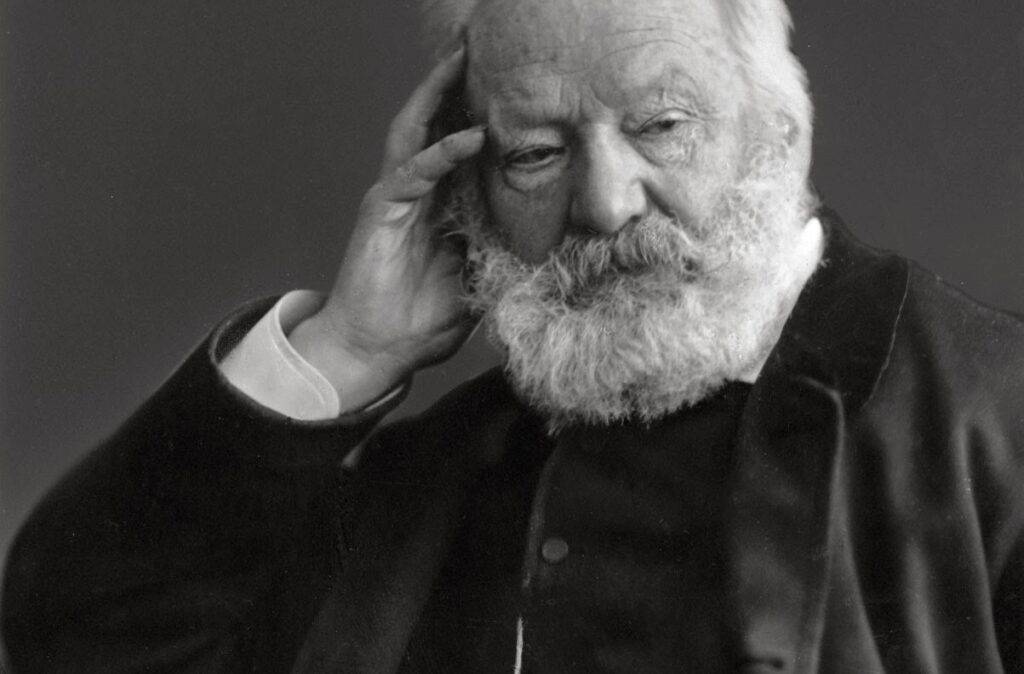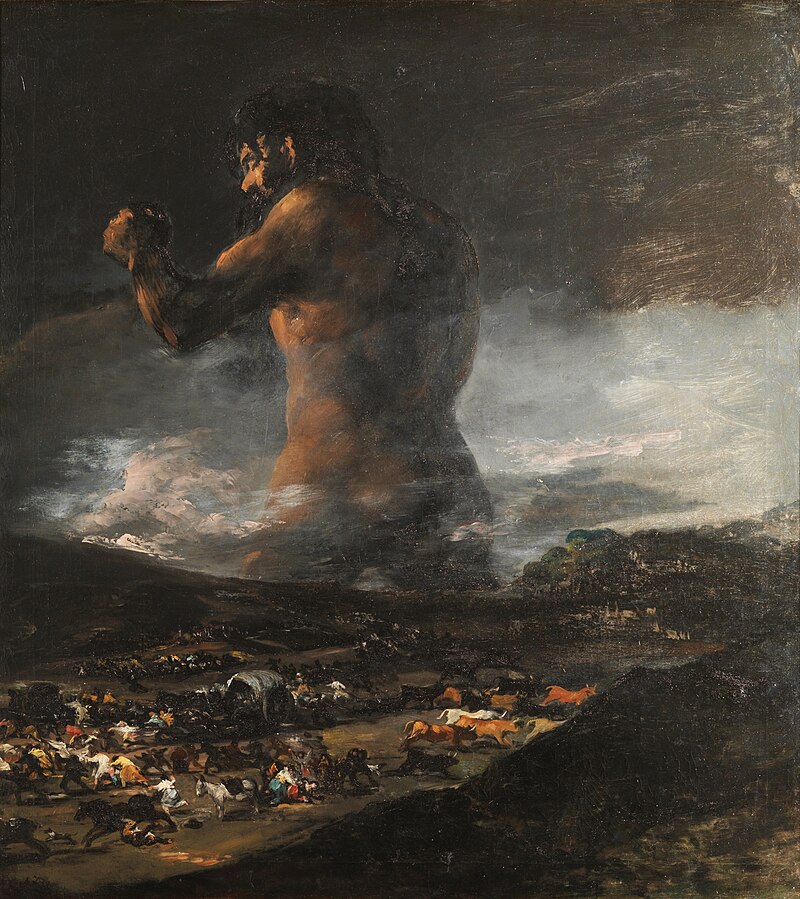Étiquette : poverty
The hidden lesson of Sugata Mitra’s “Hole-in-the-Wall” experience
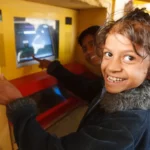
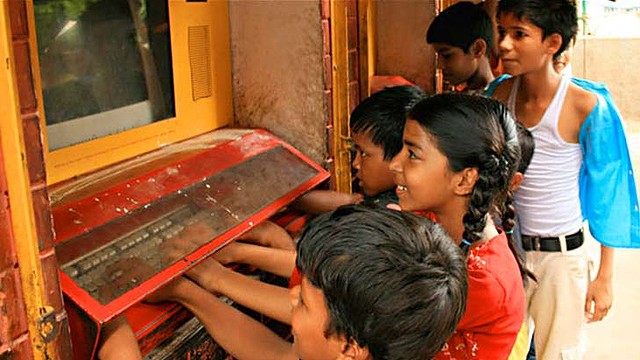
There are over a billion Indians. Unfortunately, around half of them are illiterate. Only one in four has access to proper sanitation. Some 350 million Indians live on less than one euro a day. And yet, in a strange paradox, India is also home to some of the world’s most advanced high-tech companies. New Delhi is, in a way, India’s Silicon Valley. And very recently, Indian genius has succeeded in landing a rover on the Moon.

Scandalized by the lack of access to education for his country’s children living far from urban centers, Dr. Sugata Mitra, an Indian physicist turned educational technology researcher, has been conducting a series of experiments since 1999, dubbed « The Hole-in-the-Wall », whose astonishing results are calling into question the foundations of conventional pedagogy.
“In early 1999”, writes Mitra, “colleagues and I sunk a computer into the opening of a wall near our office in Kalkaji, New Delhi. The area was located in an expansive slum, with desperately poor people struggling to survive.”
The screen was visible from the street, and the PC was available to anyone who passed by and all the people living “on the other side of the wall”. The computer had online access and a number of programs that could be used, but no instructions were given for its use. In principle, the children in this neighborhood could neither read nor write, and spoke a Tamil dialect. So, objectively speaking, the chances of them being able to cope with the computer were almost nil.
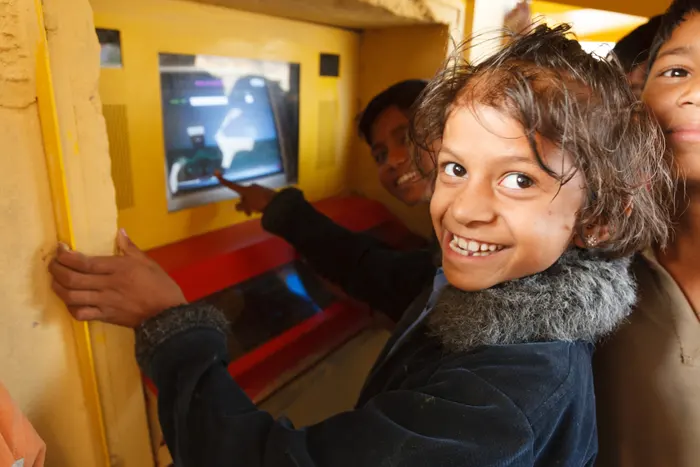
Fortunately, in the real world, things are different. Barely eight minutes after the computer had been installed, a young boy who had never seen a television screen in his life came up to sniff it out and explore the strange intruding object.
Asked if he could touch the screen, Mitra replied, « It’s on your side of the wall. » The rule was that everything on their side of the wall could be touched. The child soon realized that by moving the mouse in a certain direction, something moved on the screen in a similar way. Excited by what he had discovered, he immediately called his friends and showed them what he could do.
Typically, in the « Hole in the Wall » experiment, only one child operates the computer. He is surrounded by a first group of three others who give him advice. A second group of around sixteen children completes the team, who also interact with the child handling the equipment. Their advice is often less sound, or even wrong, but they learn too.
In hardly a few months, these kids were able to learn up to 200 English words. Although they couldn’t always pronounce them correctly, they understood their meaning and were able to interact with the computer. « You left us these machines that only speak English, so we had to learn it, » they said. Most of them succeeded in learning to navigate, play games and to draw pictures with a given application. What’s more, they have no trouble exchanging emails, and much more besides.
By repeating the experiment in several poor Indian towns, with boys as well as girls, Mitra, suspected of charlatanism by those who felt challenged by what his experience revealed, managed to dispel initial doubts that « someone » had secretly offered training to the children in advance.
What to conclude?

If the results are astonishing, they are often misinterpreted, with everyone, including Mitra himself, trying to demonstrate his or her own pre-established theory. You be the judge.
For Europeans, the experiment itself is considered borderline acceptable. Using children as “guinea pigs” without their parents’ permission is unethical by European standards. And isn’t bringing technology to the poor and thinking that everything will take care of itself one of those practices tinged with neo-colonialism that the World Bank ranks among the worst approaches to educational technology?
For their part, the gurus of Silicon Valley and GAFAM (Google, Apple, Facebook, Amazon, Microsoft) were jubilant! They’ve been telling us for years: just give every child a computer (which they manufacture and control) and they’ll educate themselves! Really?
Remember the « One Laptop per Child » project launched a decade ago, to provide inexpensive solar-powered laptops and tablets to children in the poor countries? Without wishing to criticize the good will of its promoters, let’s just say that simply making computers available has not proved a promising approach. A recent evaluation of the project in Peru confirms this.
For his part, Mitra, whose goodwill cannot be questioned, came to the conclusion that experience shows that primary education can, at least in part, pretty much “take care of itself,” if the pupils are offered a « non-invasive education » environment.
Mutual Education
Dr. Mitra, unfortunately, seems to be missing the major point of what his experience brilliantly demonstrates.
I explain:
In France, after having been an enthusiastic proponent of computers for all, author and high school teacher Vincent Faillet has also come to believe that giving every child a tablet is not the right approach. With good reason, he points out that it’s not the computer, tablet, or screen that teaches children, but the human interaction among students:
« Peer-to-peer learning, as defined by Sugata Mitra and which has amazed many pedagogues, » writes Faillet, « is in reality nothing more and nothing less than a modern, spontaneous form of ‘mutual education’. It’s striking to note that, despite the centuries that separate these observations, we find a constant pattern: children in a learning situation, grouped around a common screen for interaction, be it a box of sand, a blackboard or a computer screen. The idea of interaction is essential. As Sugata Mitra himself says, students don’t get the same results if there were to be one computer per child. You always require several children for ONE computer, in the same way that several children in mutual schools gather around the same blackboard. » (La Métamorphose de l’Ecole, Vincent Faillet, 2017)
(For more on the “Mutual Tuition” methods of Carnot, Bell and Lancaster, see the author’s article on artkarel.com website)
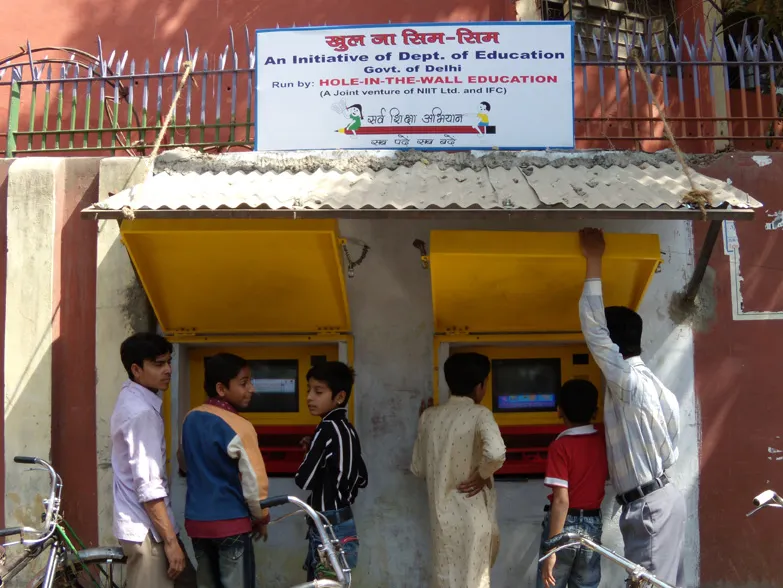
The experiment is obviously promising for remote and poor regions, provided we understand what has just been said. What is certain is that the experience reminds the inhabitants of the North of the ineffectiveness of their pedagogical practices, and the high level of passivity engendered by our educational systems.
After the eradication of Lazare Carnot’s cherished « mutual teaching » methods in 1815, Jean-Baptiste de La Salle’s « simultaneous » method triumphed. The master teaches. His authority is unquestionable. As if at mass, the pupils stand still, remain religiously silent and obey.
In 2004, Hole-in-the-Wall Education Ltd., was founded, exporting Mitra’s idea to Cambodia and Africa. Mitra has also applied his method in England. Also there, the spectacular results caused quite a stir: students who teach each other, he claims, are 7 years ahead of their academic peers. As long as they are part of a mutual teaching process, the Internet, tablets and smartphones will find their rightful place as mere tools at the service of the teacher, and not destined to replace him or her.
Pupils as young as 8 or 9 who are allowed to search the internet to prepare for the General Certificate of Secondary Education (GCSE), not only pass the test, but still remember what they have learned when tested again three months later. We’ve even seen 14-year-olds pass baccalaureate-level tests at Newcastle University. Will they find jobs commensurate with their skills in the Global West ?
In the following excerpt,
Dr Mitra describes his findings:
“Certain common observations from our experiments emerged, suggesting the following learning process occurs when children self-instruct in computer usage:
1. Discoveries tend to happen in one of two ways: When one child in a group already knows something about computers, he or she shows off those skills to the others. Or, while the others watch, one child explores randomly in the GUI (Graphical User Interface) environment until an accidental discovery is made. For example, the child may discover that the cursor changes to a hand shape at certain places on the scre
2. Several children repeat the discovery for themselves by asking the first child to let them try it.
3. While in Step 2, one or more children make more accidental or incidental discoveries.
4. All the children repeat all the discoveries made and, in the process, make more discoveries. They soon start to create a vocabulary to describe their experiences.
5. The vocabulary encourages them to perceive generalizations, such as, « When you click on a hand-shaped cursor, it changes to the hourglass shape for a while and a new page comes up. »
6. They memorize entire procedures for doing something, such as how to open a painting program and retrieve a saved picture. Whenever a child finds a shorter procedure, he or she teaches it to the others. They discuss, hold small conferences, make their own timetables and research plans. It is important not to underestimate them.
7. The group divides itself into the « knows » and the « know-nots, » much as they might divide themselves into « haves » and « have-nots » with regard to their possessions. However, a child that knows will share that knowledge in return for friendship and reciprocity of information, unlike with the ownership of physical things, where they can use force to get what they do not have. When you « take » information, the donor doesn’t « lose » it!
8. A stage is reached when no further discoveries are being made and the children occupy themselves with practicing what they have already learned. At this point, intervention is required to plant a new seed for discovery (…) Usually, a spiral of discoveries follows and another self-instructional cycle begins.”
Source: edutopia.org

